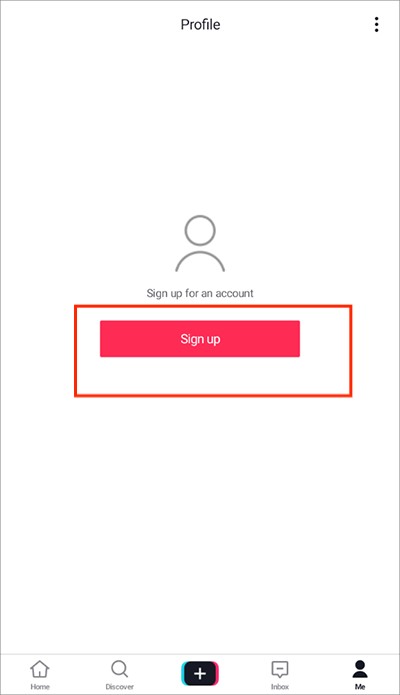一步一步学Linq to sql(二):DataContext与实体
时间:2010-10-08 来源:※森林小居※
DataContext
DataContext类型(数据上下文)是System.Data.Linq命名空间下的重要类型,用于把查询句法翻译成SQL语句,以及把数据从数据库返回给调用方和把实体的修改写入数据库。
DataContext提供了以下一些使用的功能:
l 以日志形式记录DataContext生成的SQL
l 执行SQL(包括查询和更新语句)
l 创建和删除数据库
DataContext是实体和数据库之间的桥梁,那么首先我们需要定义映射到数据表的实体。
定义实体类
|
using System.Data.Linq.Mapping;
[Table(Name = "Customers")] public class Customer { [Column(IsPrimaryKey = true)] public string CustomerID {get; set;}
[Column(Name = "ContactName")] public string Name { get; set; }
[Column] public string City {get; set;} } |
以Northwind数据库为例,上述Customers类被映射成一个表,对应数据库中的 Customers表。然后在类型中定义了三个属性,对应表中的三个字段。其中,CustomerID字段是主键,如果没有指定Column特性的Name属性,那么系统会把属性名作为数据表的字段名,也就是说实体类的属性名就需要和数据表中的字段名一致。
现在,创建一个ASP.NET页面,然后在页面上加入一个GridView控件,使用下面的代码进行绑定数据:
|
using System.Data.Linq;
DataContext ctx = new DataContext("server=xxx;database=Northwind;uid=xxx;pwd=xxx"); Table<Customer> Customers = ctx.GetTable<Customer>(); GridView1.DataSource = from c in Customers where c.CustomerID.StartsWith("A") select new {顾客ID=c.CustomerID, 顾客名=c.Name, 城市=c.City}; GridView1.DataBind(); |
使用DataContext类型把实体类和数据库中的数据进行关联。你可以直接在DataContext的构造方法中定义连接字符串,也可以使用IDbConnection:
|
using System.Data.SqlClient;
IDbConnection conn = new SqlConnection("server=xxx;database=Northwind;uid=xxx;pwd=xxx"); DataContext ctx = new DataContext(conn); |
之后,通过GetTable获取表示底层数据表的Table类型,显然,数据库中的Customers表的实体是Customer类型。随后的查询句法,即使你不懂SQL应该也能看明白。从Customers表中找出CustomerID以“A”开头的记录,并把CustomersID、Name以及City封装成新的匿名类型进行返回。
结果如下图:

强类型DataContext
|
public partial class NorthwindDataContext : DataContext { public Table<Customer> Customers; public NorthwindDataContext(IDbConnection connection) : base(connection) { } public NorthwindDataContext(string connection) : base(connection) { } } |
强类型数据上下文使代码更简洁:
|
NorthwindDataContext ctx = new NorthwindDataContext("server=xxx;database=Northwind;uid=xxx;pwd=xxx"); GridView1.DataSource = from c in ctx.Customers where c.CustomerID.StartsWith("A") select new { 顾客ID = c.CustomerID, 顾客名 = c.Name, 城市 = c.City }; GridView1.DataBind(); |
DataContext其实封装了很多实用的功能,下面一一介绍。
日志功能
|
using System.IO;
NorthwindDataContext ctx = new NorthwindDataContext("server=xxx;database=Northwind;uid=xxx;pwd=xxx"); StreamWriter sw = new StreamWriter(Server.MapPath("log.txt"), true); // Append ctx.Log = sw; GridView1.DataSource = from c in ctx.Customers where c.CustomerID.StartsWith("A") select new { 顾客ID = c.CustomerID, 顾客名 = c.Name, 城市 = c.City }; GridView1.DataBind(); sw.Close(); |
运行程序后在网站所在目录生成了log.txt,每次查询都会把诸如下面的日志追加到文本文件中:
|
SELECT [t0].[CustomerID], [t0].[ContactName], [t0].[City] FROM [Customers] AS [t0] WHERE [t0].[CustomerID] LIKE @p0 -- @p0: Input String (Size = 2; Prec = 0; Scale = 0) [A%] -- Context: SqlProvider(Sql2005) Model: AttributedMetaModel Build: 3.5.20706.1 |
应该说这样的日志对于调试程序是非常有帮助的。
探究查询
|
using System.Data.Common; using System.Collections.Generic;
NorthwindDataContext ctx = new NorthwindDataContext("server=xxx;database=Northwind;uid=xxx;pwd=xxx"); var select = from c in ctx.Customers where c.CustomerID.StartsWith("A") select new { 顾客ID = c.CustomerID, 顾客名 = c.Name, 城市 = c.City }; DbCommand cmd = ctx.GetCommand(select); Response.Write(cmd.CommandText + "<br/>"); foreach (DbParameter parm in cmd.Parameters) Response.Write(string.Format("参数名:{0},参数值:{1}<br/>", parm.ParameterName, parm.Value)); Customer customer = ctx.Customers.First(); customer.Name = "zhuye"; IList<object> queryText = ctx.GetChangeSet().ModifiedEntities; Response.Write(((Customer)queryText[0]).Name); |
在这里,我们通过DataContext的GetCommand方法获取了查询对应的DbCommand,并且输出了CommandText和所有的DbParameter。之后,我们又通过GetChangeSet方法获取了修改后的实体,并输出了修改内容。
执行查询
|
NorthwindDataContext ctx = new NorthwindDataContext("server=xxx;database=Northwind;uid=xxx;pwd=xxx"); string newcity = "Shanghai"; ctx.ExecuteCommand("update Customers set City={0} where CustomerID like 'A%'", newcity); IEnumerable<Customer> customers = ctx.ExecuteQuery<Customer>("select * from Customers where CustomerID like 'A%'"); GridView1.DataSource = customers; GridView1.DataBind(); |
前一篇文章已经说了,虽然Linq to sql能实现90%以上的TSQL功能。但是不可否认,对于复杂的查询,使用TSQL能获得更好的效率。因此,DataContext类型也提供了执行SQL语句的能力。代码的执行结果如下图:

创建数据库
|
testContext ctx = new testContext("server=xxx;database=testdb;uid=xxx;pwd=xxx"); ctx.CreateDatabase();
[Table(Name = "test")] public class test { [Column(IsPrimaryKey = true, IsDbGenerated = true)] public int ID { get; set; }
[Column(DbType="varchar(20)")] public string Name { get; set; } }
public partial class testContext : DataContext { public Table<test> test; public testContext(string connection) : base(connection) { } } |
这段代码在数据库中创建了名为testdb的数据库,等同于下面的脚本:
|
CREATE TABLE [dbo].[test]( [ID] [int] IDENTITY(1,1) NOT NULL, [Name] [varchar](20) COLLATE Chinese_PRC_CI_AS NULL, CONSTRAINT [PK_test] PRIMARY KEY CLUSTERED ( [ID] ASC )WITH (IGNORE_DUP_KEY = OFF) ON [PRIMARY] ) ON [PRIMARY] |
同时,DataContext还提供了DeleteDatabase()方法,在这里就不列举了。
使用DbDataReader数据源
|
using System.Data.SqlClient;
var conn = new SqlConnection("server=xxx;database=Northwind;uid=xxx;pwd=xxx"); var ctx = new DataContext(conn); var cmd = new SqlCommand("select * from customers where CustomerID like 'A%'", conn); conn.Open(); var reader = cmd.ExecuteReader(); GridView1.DataSource = ctx.Translate<Customer>(reader); GridView1.DataBind(); conn.Close(); |
你同样可以选择使用DataReader获取数据,增加了灵活性的同时也增加了性能。
看到这里,你可能会觉得手工定义和数据库中表对应的实体类很麻烦,不用担心,VS2008提供了自动生成实体类以及关系的工具,工具的使用将在以后讲解。今天就讲到这里,和DataContext相关的事务、加载选项、并发选项以及关系实体等高级内容也将在以后讲解。











